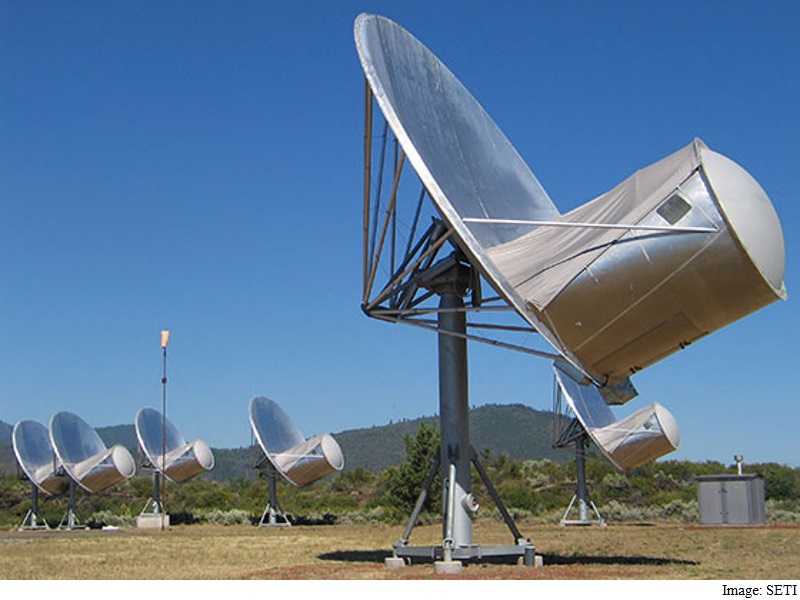- Home
- Science
- Science News
- Search for Extraterrestrial Intelligence Expands to 20,000 Star Systems
Search for Extraterrestrial Intelligence Expands to 20,000 Star Systems

The search for radio signals from alien worlds is expanding to 20,000 star systems that were previously considered poor targets for intelligent extraterrestrial life, US researchers said Wednesday.
New scientific data has led the SETI Institute to believe systems orbiting red dwarfs - dim, long-lived stars that are on average billions of years older than our sun - are worth investigating.
"This may be one instance in which older is better," said astronomer Seth Shostak of California-based SETI, a private, non-profit organization which stands for Search for Extraterrestrial Intelligence.
"Older solar systems have had more time to produce intelligent species."
The two-year project involves picking from a list of about 70,000 red dwarfs and scanning 20,000 of the nearest ones, along with the cosmic bodies that circle them.
(Also see: Why Haven't Aliens Contacted Us Yet? Scientists May Have the Answer)
To do this, scientists will use the SETI Institute's Allen Telescope Array in northern California, a group of 42 antennas that can observe three stars simultaneously.
"We'll scrutinize targeted systems over several frequency bands between 1 and 10 GHz," said SETI scientist Gerry Harp.
"Roughly half of those bands will be at so-called 'magic frequencies' - places on the radio dial that are directly related to basic mathematical constants," he added.
"It's reasonable to speculate that extraterrestrials trying to attract attention might generate signals at such special frequencies."
For a long time, scientists ruled out searching around red dwarfs because habitable zones around the stars are small.
Any planets orbiting them would be so close that one side would be constantly facing the star, making one side of the planet very hot and the other quite cold and dark.
But more recently, scientists have learned that heat could be transported from the light side of the planet to the darker side, and that much of the surface could be amenable to life.
"In addition, exoplanet data have suggested that somewhere between one sixth and one half of red dwarf stars have planets in their habitable zones, a percentage comparable to, and possibly greater than, for Sun-like stars," said the statement.
Experts have been hunting for alien intelligence for six decades, but have not found any evidence yet.
Catch the latest from the Consumer Electronics Show on Gadgets 360, at our CES 2026 hub.
Related Stories
- Samsung Galaxy Unpacked 2025
- ChatGPT
- Redmi Note 14 Pro+
- iPhone 16
- Apple Vision Pro
- Oneplus 12
- OnePlus Nord CE 3 Lite 5G
- iPhone 13
- Xiaomi 14 Pro
- Oppo Find N3
- Tecno Spark Go (2023)
- Realme V30
- Best Phones Under 25000
- Samsung Galaxy S24 Series
- Cryptocurrency
- iQoo 12
- Samsung Galaxy S24 Ultra
- Giottus
- Samsung Galaxy Z Flip 5
- Apple 'Scary Fast'
- Housefull 5
- GoPro Hero 12 Black Review
- Invincible Season 2
- JioGlass
- HD Ready TV
- Laptop Under 50000
- Smartwatch Under 10000
- Latest Mobile Phones
- Compare Phones
- Tecno Spark Go 3
- iQOO Z11 Turbo
- OPPO A6c
- Samsung Galaxy A07 5G
- Vivo Y500i
- OnePlus Turbo 6V
- OnePlus Turbo 6
- Itel Zeno 20 Max
- Lenovo Yoga Slim 7x (2025)
- Lenovo Yoga Slim 7a
- Lenovo Idea Tab Plus
- Realme Pad 3
- Garmin Quatix 8 Pro
- NoiseFit Pro 6R
- Haier H5E Series
- Acerpure Nitro Z Series 100-inch QLED TV
- Asus ROG Ally
- Nintendo Switch Lite
- Haier 1.6 Ton 5 Star Inverter Split AC (HSU19G-MZAID5BN-INV)
- Haier 1.6 Ton 5 Star Inverter Split AC (HSU19G-MZAIM5BN-INV)

















